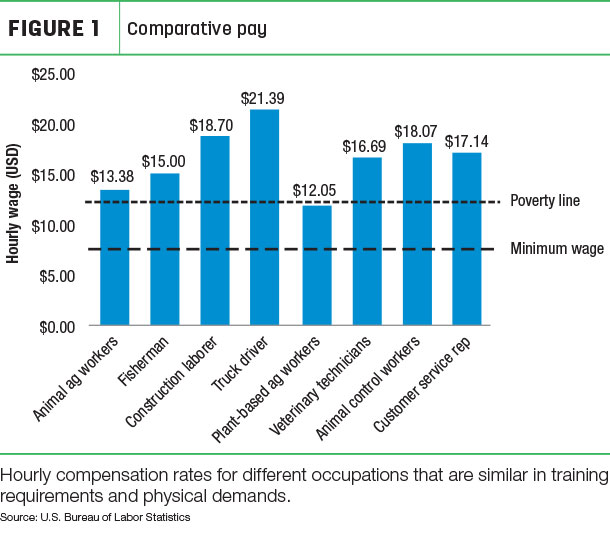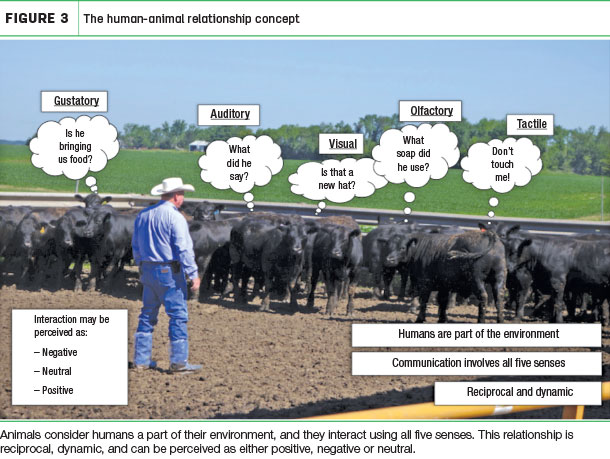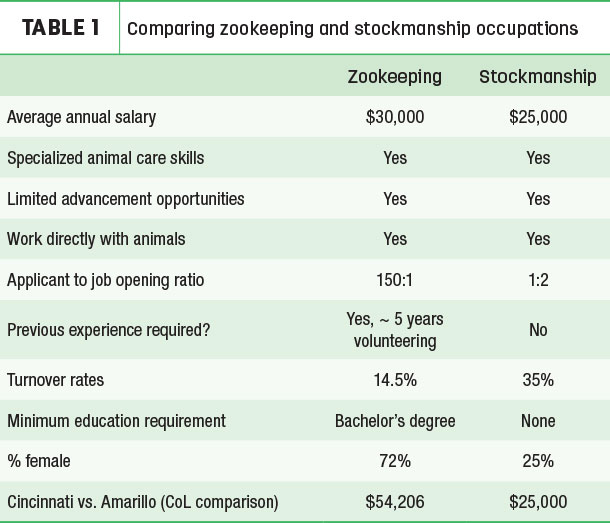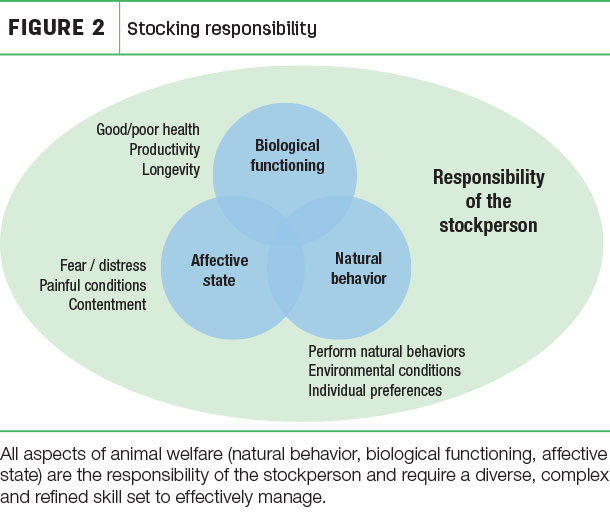To overcome these challenges, producers are identifying out-of-the-box solutions including alternative labor sources (e.g., prison inmates) and are quick to implement new technology that makes managing more animals easier and more efficient. Yet there is a need to develop and maintain a strong long-term workforce of highly skilled and effective stewards of our food animals.
Finding and keeping good help
A diverse suite of factors impact our ability to recruit and retain good stockpeople. The human population is increasingly urban; thus fewer people are working in agriculture, there is limited awareness in urban communities that stockmanship is a potential occupation, and the current agricultural workforce is aging.
The “technology treadmill” requires stockpeople to continually learn and adopt new technologies. Further, smear campaigns present a negative public perception of agricultural animal handling that neither provides an accurate representation of actual animal care nor inspires those wanting to work with animals to enter into this profession.
Compensation for stockpeople must increase, the workload needs to be critically evaluated, and the pay strategy should change. Sometimes employees are paid based upon the number of animals handled rather than being paid for the duration of time spent completing the husbandry task. This pay structure motivates employees to work quickly, which can result in suboptimal management and handling strategies.
If humans work quickly or aggressively with livestock animals, they can induce a fear response which compromises productivity, biological functioning and the human-animal relationship. Further, stockpeople can become overwhelmed by the number of animals they are responsible for monitoring, they work long hours for little pay (Figure 1) and can suffer from exhaustion and compassion fatigue.

These challenges surrounding employee recruitment and retention are reflected in the high turnover rates (up to 35%) in animal operations.
Employee turnover impacts your operation and animals
Stockpeople work directly with animals on a daily basis. These repeated interactions between stockperson and animal are the foundation of the human-animal relationship (Figure 3).

When there is a change in stockperson, the animals notice, and this personnel change disrupts the human-animal relationship. The loss of a stockperson also means the loss of institutional knowledge regarding the operation’s infrastructure, standard operating procedures and the behavior and health history of individual animals. These changes can result in inconsistencies in animal care and forces the operation to devote more resources to training new personnel. Furthermore, the training period is a challenging and sensitive period for the trainer, the trainee and the animals – particularly regarding euthanasia.
The stockperson/zookeeper conundrum
This increasingly urban population may be unaware that stockmanship is a potential occupation but are eager to become zookeepers. Many of the duties, opportunities for advancement and compensation rates are similar between the two occupations (Table 1).

There is fierce competition for zookeeping jobs, the turnover rates for zookeepers is less than half of that of stockpeople (14.5% versus 35%), and the minimum requirements for employment as a zookeeper have risen in the past 20 years to now require a bachelor’s degree, and many candidates will typically spend about five years volunteering in a zoo prior to being considered for full employment.
This is in stark contrast to the stockmanship occupation, and this drastic difference may be due, in part, to the fact those interested in working with animals are unaware stockmanship is a career option.
Stockmanship = physical proof of animal welfare
Stockmanship is a complex and dynamic occupation, and their responsibilities encompass all aspects of animal welfare (Figure 2).

Stockpeople must possess a deep knowledge base of species-specific information as well as have a mastery of a diverse suite of husbandry and management skills. Further, stockpeople must be cognizant of the predator-prey dynamic between humans and livestock, and must understand how their actions directly and indirectly impact the human-animal relationship that exists between themselves and the animals in their care (Figure 3).
Worth their weight in gold or breaking the bank
A single stockperson can have operation-level consequences on producer profitability, both positively and negatively. Fear of humans is one of the most important factors associated with variation among commercial farms in animal productivity. Substantial research has demonstrated the impact of stockperson attitudes, stockperson behavior and the frequency and duration of time stockpeople spend with animals on swine, dairy, beef and poultry productivity.
Animal operations that were more productive had stockpeople that spent more time in visual and auditory contact with the animals, had a more positive attitude toward animals and had fewer negative interactions (tactile or auditory) with animals. Hiring the right stockperson for your operation may be difficult, but it pays to be selective because the wrong stockperson can cost you more than you think.
It’s time to make stockmanship sexy
Animal agriculture needs a workforce of well-trained and professional stockpeople. There is a need to challenge “folklore husbandry” and begin to implement and train new stockpeople in scientifically supported, economically viable and professionally executed husbandry practices. The next generation of stockpeople are most likely urban-born and proficient in developing and applying new technologies.
Rebranding the occupation as “husbandry technicians” or “animal technicians” and highlighting that stockpeople have the opportunity to work with animals and technology may increase the attractiveness of this occupation to those seeking a career working with animals.
Many of the potential professional stockpeople are most likely waiting to hear if they will be selected to be a zookeeper and do not realize there is an equally fulfilling career in agriculture. Advertising for agricultural animal technicians in urban communities may yield a more diverse and qualified applicant pool that may inspire producers to re-evaluate salary structures and offer incentives for moving to a rural community. ![]()

-
Courtney Lynd Daigle
- Assistant Professor, Animal Welfare
- Department of Animal Science Texas A&M University
- Email Courtney Lynd Daigle





